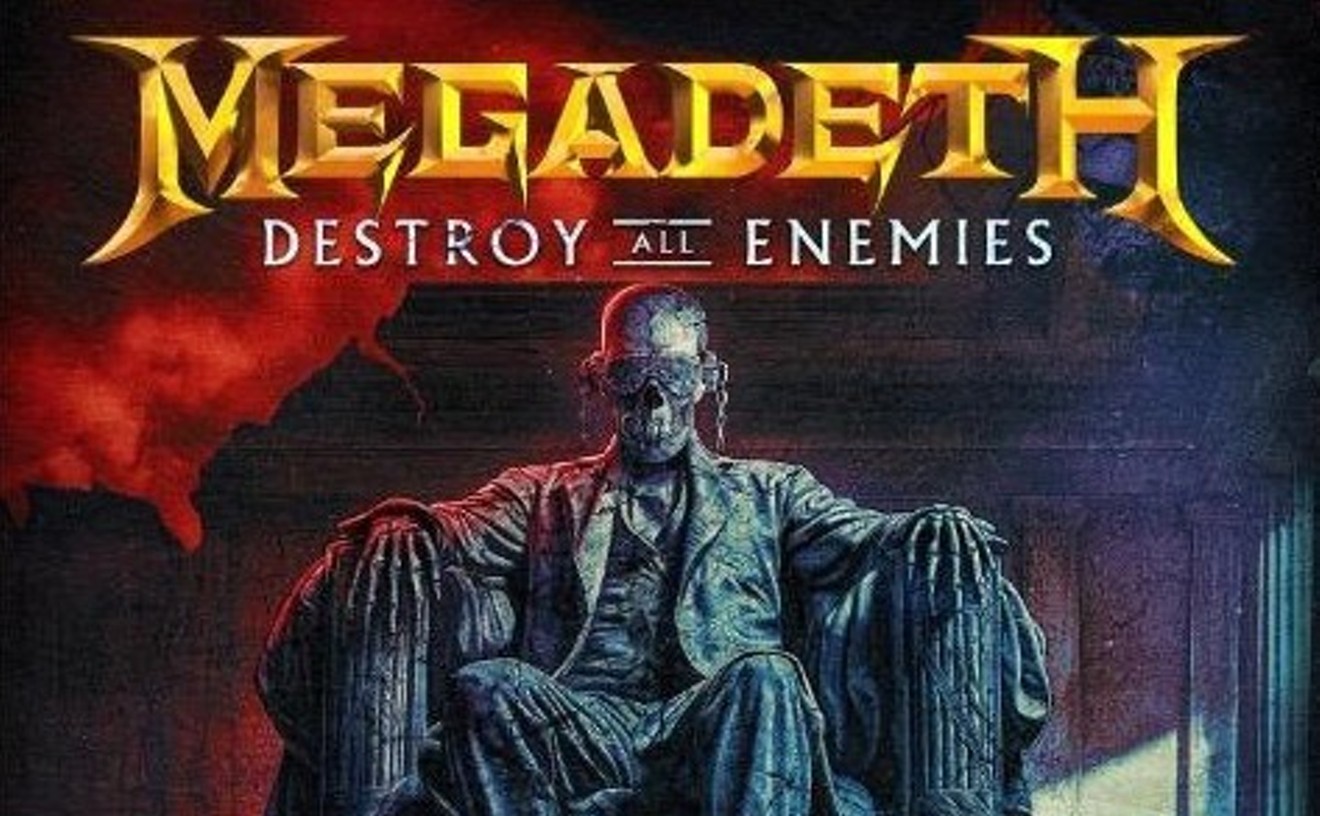His father had Guerrero playing the violin soon after the kid was walking. Being a great lover of Japanese art and culture, the elder Guerrero had his 4-year-old study the instrument in the Suzuki method, a training technique in which children start playing before they learn to read music. Guerrero took to the method well and soon was figuring out Tito Puente tunes on his violin.
After his father accepted a National Endowment for the Arts fellowship to study Japanese mask-making, Guerrero moved with his family to Matsumoto, Japan, where he continued his studies at the prestigious Suzuki International Institute.
There the toddler not only had to keep up with his better-trained fellow students, but also had to learn Japanese from inference, since his instructor spoke no English. Guerrero already knew Spanish, English and Portuguese, so adding a fourth language, he says now, was easy.
"I totally embraced the Japanese culture, so much that I wanted to become Japanese," he says.
By studying with Japanese instructors, who required more discipline than his teachers back home in Mesa had, Guerrero advanced quickly. By the time his family moved back to the Valley, 5-year-old Guerrero was bowing circles around his American classmates.
Over the years, Guerrero's father has heard people talk about his son as a musical prodigy but says he always thought the boy's real talent was in the visual arts.
"He started drawing images from his subconscious that were surreal, powerful and symbolic," he says. "He was drawing images that artists normally draw as adults."
At 10, Guerrero joined his parents in Zum Zum Zum, running through everything from cumbias to Brazilian samba on his violin. When the popular Valley dance band opened for Tito Puente in San Diego, Guerrero got the chance to meet his idol. After Zum Zum Zum's opening set, Puente approached Guerrero and marveled at how well he played.
"Yeah, well I want to play with you," the wide-eyed kid replied to the Mambo King. Puente asked him what song he'd like to perform with him, and Guerrero's answer was the Latin standard "Moliendo Café." True to his word, Puente invited the precocious young violinist onstage to sit in on the closing number. Together they brought the house down and, from that moment, Guerrero knew exactly what he wanted to do for the rest of his life.
By the time he was 12, Guerrero decided he wanted to lead his own band, too. Following the example of Carlos Santana, another of his heroes, he decided the best way to step out front would be to pick up the guitar. Ever the intuitive learner, Guerrero taught himself the instrument by playing along with jingles from television commercials.
He remembers, "During the time. . . when other teens were into video games and gangsta rap. . . I was getting a history lesson on Latin rock and the originators of the Chicano music movement [from my father]."
For his first group, though, Guerrero decided he wanted to form a teen blues band. Not knowing any musicians his own age, he rounded up a few warm bodies from around the neighborhood to fill the necessary spots. "I basically [took] a bunch of my friends that I hung out with in school," he recalls, "and whoever I thought had the best potential to be a musician, I'd invite over and teach them how to play."
His green Gato Loco band soon landed a performance at the "Even Kids Get the Blues" festival put on by the Phoenix Blues Society. But the group quickly moved on from the blues to become an unabashed Santana knockoff, drawing heavily from the songbook of Chicano rock classics from the '60s and '70s. "It started becoming more of a Latin rock deal — less blues and more Chicano music, more percussion," Guerrero explains.
Although his band continued to play music from his parents' generation, Guerrero began exploring different youth subcultures in his spare time. At 15, he became fascinated by hip-hop and joined the Sour Patch Urban Dance break-dance crew, with which he still competes across the country. "Hip-hop is a resource I tap into, [that] I derive creativity from," he says.
As Gato Loco's sound broadened to include hip-hop and funk rhythms — and as its members' talents matured — Guerrero was able to attract more high-profile players to join the group, most notably guitarist Gustavo Angeles, a member of local rock en español favorite Casa de Locos. In Angeles, Guerrero had found a true musical peer with whom he could explore far more complex musical ideas than his wedding band was able to handle.
So that they could court more upscale gigs around the Valley, the pair formed Vibra, a Latin jazz trio with Guerrero on violin, Angeles on guitar and a rotating cast of players on congas. With Vibra, Guerrero was able to develop his improvisational skills and play for audiences who put a higher premium on technique than did the younger Gato Loco crowds.
By the time he was 17, Guerrero had developed so many divergent tastes that no single band could encompass his vision. He decided that the only way he could adequately express himself was by recording a solo album. Indeed, he crammed his 1999 debut Big Wet Mop with more ideas and stylistic tangents than typically fit into one record collection, let alone on one disc. He flits between salsa, hip-hop, jazz and rock as the track numbers change. To further push the envelop, he masked his violin under a gauze of distortion that made it sound like an overdriven guitar.
On June 21, Guerrero will release his second effort, the considerably more focused and sophisticated Buscando/ Searching. For the album, he unplugged the violin and reigned in his riffing to arrive at what he calls "acoustic Latin jazz with soul, or Afro-Cuban Brazilian gypsy jazz." Clearly, the boy wonder has gained perspective with the passing of his teens.
Despite all the attention he's received for his technical skill, Guerrero wants to be known, above all else, for his songwriting ability. He believes that the players who focus on chops rather than artistic expression "get burned out, and they lose the spirit of being a musician in the sense of creating. They end up being another musician for hire," he says. "I'd rather get to where I'm going based on my songwriting and musical styling."









